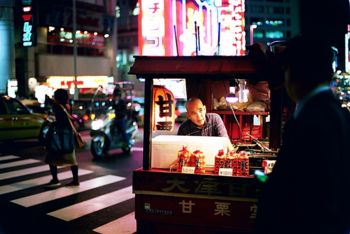Tokyo

Photo © by Sonny Santos, used by permission.
Tokyo (東京 Tookyoo), Japan's capital, is often thought of as a single city, lying at the heart of the world's most heavily populated region. However, Tokyo is really a metropolitan region, a network of many cities and communities, sprawling outwards across the Kanto region of Honshu island. The population was 12,659,000 in 2006,[1] with millions more within the Greater Tokyo Area.[2][3]
Literally meaning 'East Capital', Tokyo has been Japan's de facto capital only since 1868, at a time when the country was ending hundreds of years of self-imposed isolation. Its original name was Edo (江戸), meaning 'estuary'; the city grew in power and prestige over the centuries, eventually becoming the capital on the move of the Emperer Meiji (明治天皇 Meiji-tennoo) from Kyoto.
Footnotes
- ↑ Japan Statistical Yearbook: 'Population by Prefecture 1920-2006'. Ministry of Internal Affairs and Communications. .xls document.
- ↑ United Nations: 'World Urbanization Prospects: The 2007 Revision Population Database'. Select 'Japan' in the right hand column and click 'Display'.
- ↑ The 'Greater Tokyo Area' has several definitions and therefore names in Japanese. A common designation is 'One Metropolis, Three Prefectures' (一都三県 Itto Sanken) - i.e. Tokyo, Chiba, Kanagawa and Saitama.